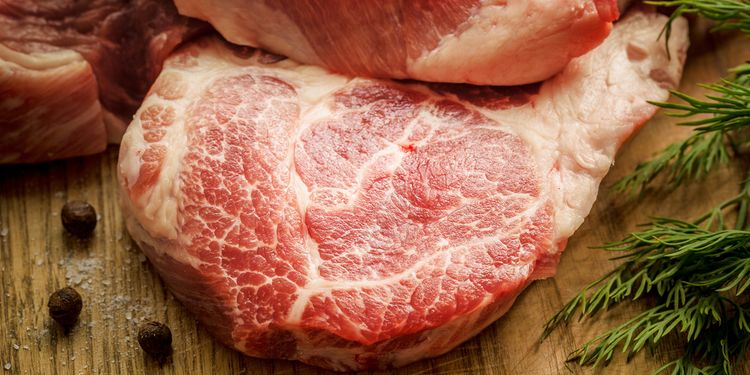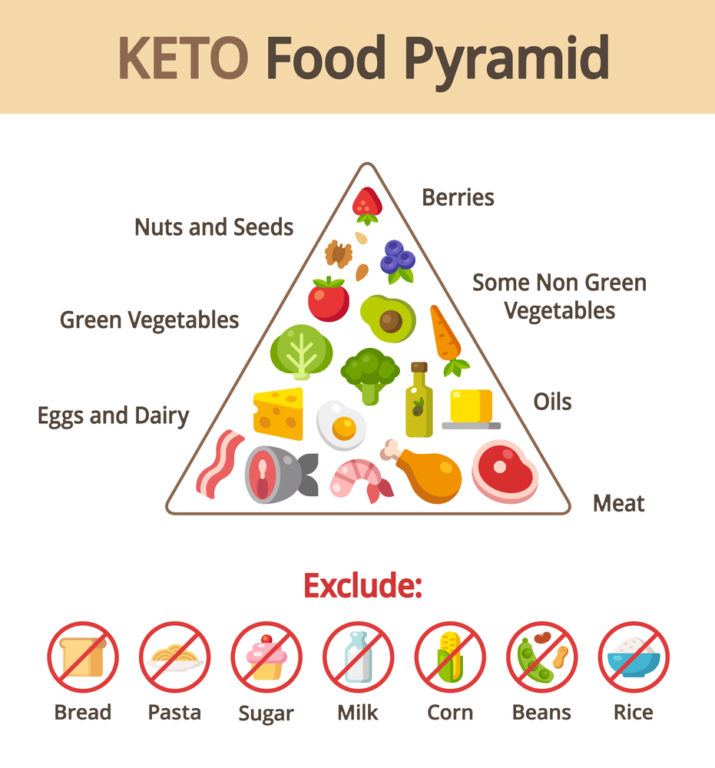How To Burn Fat When You’re Over 40

In an age marked in part by social media bullying and an increased emphasis on physical appearance, there have also been noted emergences of self-love trends. One of those is the now-infamous “Dad Bod.” Not to knock the trend, but I can’t help but speak for many women in saying that it isn’t all that it’s cracked up to be. For men of a certain age, your bodies have entered into somatopause and require a slightly modified approach, especially when it comes to your diet.
Somatopause is a period that typically begins around 30, and is marked by lower production of growth hormone. This directly affects the reduction of lean body mass, as well as bone density- and at the same time, increases in body fat.
So the question becomes, what to do about it? Luckily for you, you’re not the first guy to turn 40. So by now, a few tricks have been figured out…

Tip #1: Eat Bone Broth
Buy this at your local health food store or make it yourself. Take the bones from pasture-raised beef or chicken and put them in a slow cooker for 10-24 hours, or up to 48 hours in the case of beef. It’s important to cook this very slowly so that useful ingredients are drawn out.
Collagen from the animal’s bones will help tremendously to keep your skin elastic and youthful. It’ll also help to maintain the health of your joints as well, keeping them lubricated and mobile.

Tip #2: Eat Sex-Hormone Boosting Foods
Male and female bodies are wired differently (shocker!), so to keep our bodies healthy we must target different hormones.
Testosterone-boosting foods for men:
- Brazil nuts
- Steak
- Eggs with yolks
- Crustaceans
- Garlic
- Asparagus
Estrogen-boosting foods for women:
- Flax, sesame, and sunflower seeds
- Cashews
- Curly Kale
- Broccoli
- Apricots
- Green cabbage
- Strawberries and blueberries

Tip #3: Eat Fat-Burning Foods
As you should know by now, whole foods of all kinds should be a staple in your diet: organic vegetables, healthy fats, free range chicken and eggs, grass fed dairy etc.
Also, be sure to replace bad carbs with higher-caliber ones such as sweet potato and wild rice.
Here are some fat-burning foods that’ll make you feel better, and give you a more youthful overall appearance:
Healthy Fats
Not all fats are created equally – of importance, there are fats that help you burn calories and build muscle. These fats may be found in the following foods:
- Butter from grass-fed cows
- Fatty meat from pasture-raised animals
- Coconut oil, coconut butter, and full-fat unsweetened coconut milk
- Lard and tallow from pasture-raised animals
- Avocado and avocado oil
- Organic soaked and dehydrated nuts and seeds, nut oil, and nut butters
- Olive oil
Protein
Protein is important but shouldn’t be overdone. Here’s what you want to be getting yourself into:
- Pasture-raised poultry and eggs
- Grass-fed, fermented dairy, like cheese, kefir, cottage cheese, and yogurt
- Wild-caught seafood
- Grass-fed beef, bison, and buffalo
Fruits and Vegetables
As long as you can tolerate them without GI distress, eat as many raw vegetables as you’d like. Leafy greens are your best friend in this area, and you can include them in smoothies or salads. When craving a snack, go for celery sticks instead of potato chips. Perhaps this is an acquired taste, but it’ll be well worth it when you gaze into the mirror in two weeks and spot the faint outline of a few abdominal muscles.

Tip #4: Dodge Fat-Storing Foods
Refined foods, processed sugar, wheat and artificial sweeteners are foods that promote inflammation and leaky gut, and store unnecessary fat.
Avoid these fat-storing foods and you’ll undoubtedly notice a difference in how you look and feel:
- Wheat/gluten (including breads, pasta, crackers)
- Refined grain oils (corn oil, safflower oil, canola oil, etc.)
- Artificial sweeteners (blue, yellow, and pink packets)
- Corn in any form
- White potatoes
- Prepackaged processed foods
- Refined white sugar (including brown sugar, sugar syrup, cane sugar)
- Agave Syrup
- High sugar fruits like melon, plums, bananas, grapes, oranges (occasional treat)
- Soda or sports drinks of any kind
- White rice/white rice flour

Tip #5: Adopt a Ketogenic Diet, If and When It Makes Sense
During somatopause or menopause, sometimes you have to fight fire with fire. One tool to put in your back pocket is knowledge of ketogenic fasting.
Ketogenic fasting is a way of timing your meals to optimize your fat-burning hormones, reduce inflammation, and regulate insulin and blood sugar throughout the day.
Here’s a sample menu of how the first day could look:
7:00 am: Organic coffee with coconut oil, grass-fed heavy cream, butter, full-fat coconut milk, or MCT Oil. Or if you don’t drink coffee, try blending some fat in your tea or have a cup of bone broth. You can even blend some avocado oil in water with some leafy greens.
11:00 am: Salad made up of organic greens, nuts/seeds, tomatoes, spinach, cucumber and feta cheese with olive oil. If you’re in a hurry, pre-prepare a green smoothie with broccoli, spinach, celery, mint leaves, chia seeds and stevia.
1:00 pm: Eggs (scrambled) with hot sauce and kale. If you’re not quite hungry by this point, just snack on some carrots or nuts.
6:00 pm: Meat and veggies. Indulge in a nice, big grass-fed burger with tomato and greens. Top with some grilled onions and cheese. If red meat isn’t calling your name, eat some chicken legs with roasted veggies, sauteed shrimp with zucchini noodles or salmon with asparagus.
On day two, push the first snack back at least 30 minutes, to 11:30 am. Do that every day until it reaches a gap of at least 16 hours. It sounds bad right now, but it’s actually pretty efficient, as you’re sleeping for the good part of those 16 hours.
If, for example, you finish your last meal by 8:00 pm, and you consume nothing but water, coffee or tea until 12:00 pm next day, you’ve just fasted for 16 hours. And if that next meal at around 1:00pm is very low carb (green smoothie or salad), your fasting period essentially extends all the way until dinner.
So what does this do exactly? Well, your body typically uses glucose, a very simple type of sugar, as fuel. Once you begin fasting, your glucose levels get depleted, and body switches its fuel source to ketones, which are made by breaking fat stores.
Fasting forces your body to produce human growth hormone, which makes you look and feel younger. Fasting doesn’t need to be brutal or taxing on your body, as you still can eat when you feel hungry- just be mindful of what you eat. Stick to low carb, with some healthy fats like avocado, eggs or nuts mixed in.
Putting this diet into effect for at least three days a week will have profound effects on your physical appearance. You’ll develop more muscle and lose more fat, your thinking will be noticeably clearer, and you’ll feel more energetic.
A Ketogenic diet is powerful tool, but it’s not for everyone. If you have a history with eating disorders, if you’re pregnant or nursing, or are diabetic, this diet sadly isn’t for you.

Tip #6: Exercise Specifically, Not Excessively
Believe it or not, slaving away for hours on a treadmill, or exhausting yourself with any other exercise for that matter, won’t help you longterm in achieving your desired weight loss. To sculpt your body, all you need are a few minutes per day of targeted exercise.
Build Muscle with Strength Training
To keep your bones strong and your metabolism fast, strength training is something you should incorporate into your workout repertoire. Your body needs constant challenging in order to adapt and grow. If you’re repeating the same movements over and over, you won’t get far.
Here are some exercises to blend in to your routine:
- Warmup: light jogging or jumping jacks
- Kettle bell swings
- Push-ups
- Squats
- Weighted lunges
- Bench press
- Deadlifts
Focus on form, first and foremost. Avoiding injury is number one when dealing with heavier weights. Consistency is a key factor that’ll lead you to your goal, and you can’t be consistent if you’re injured or hurt.
Above All
Stay committed to your positive lifestyle changes. If you’re willing to commit to yourself, there’s no chance that you won’t be feeling amazing, be it at 40, 60, or even 80 years old. So get to it, because you’re worth it!
